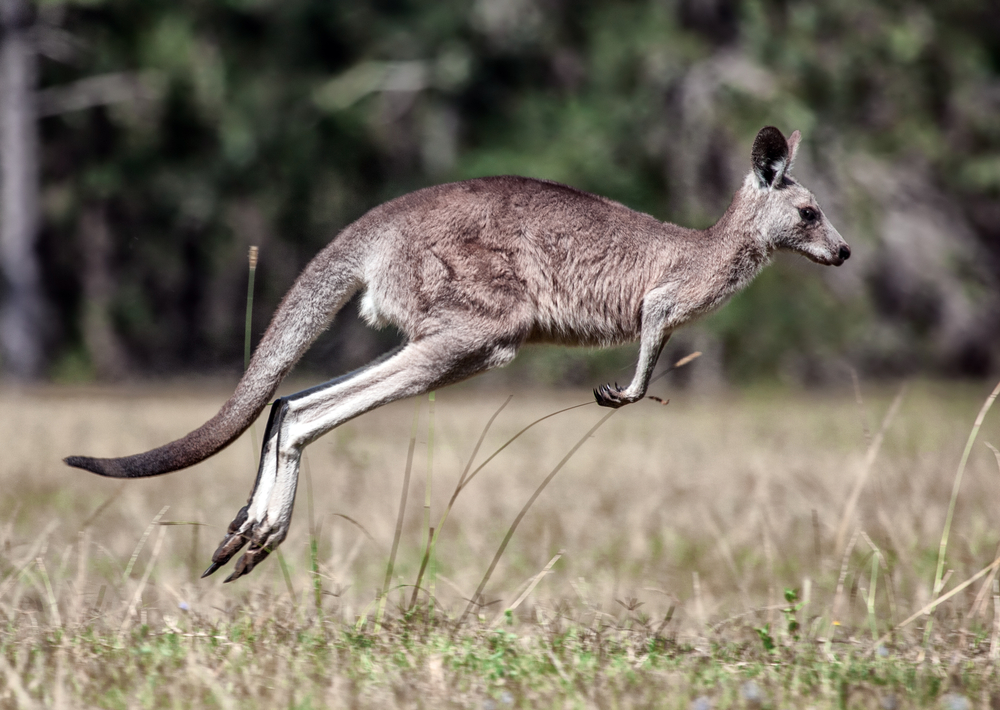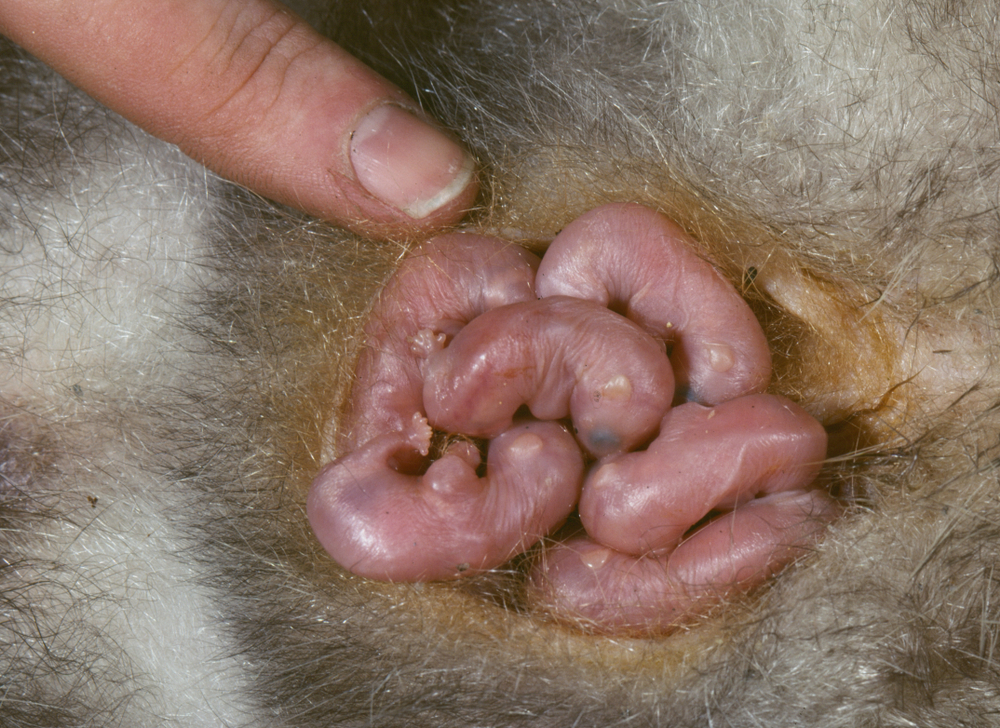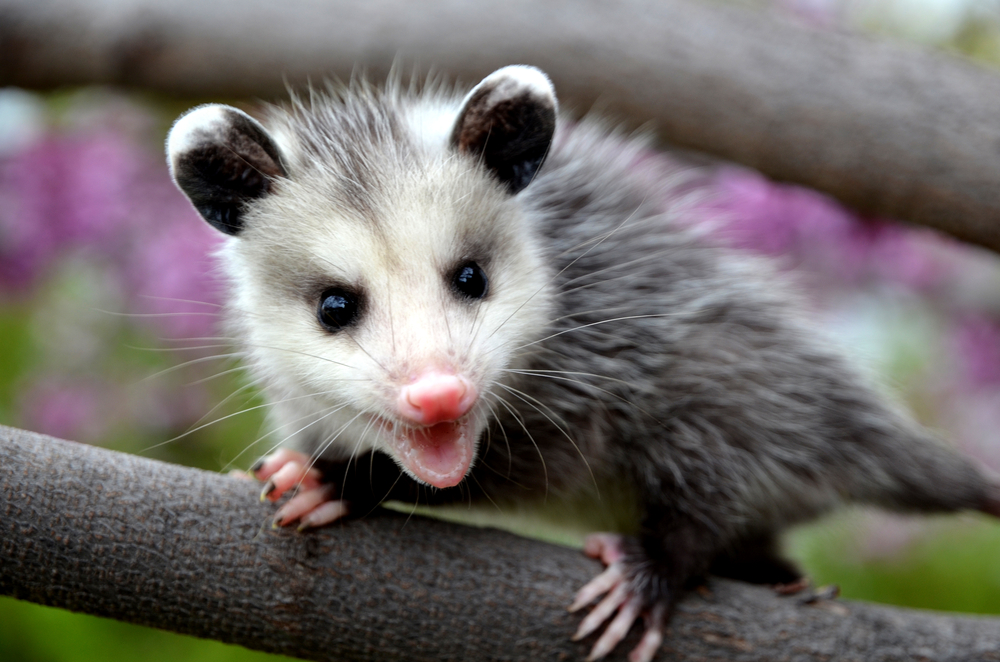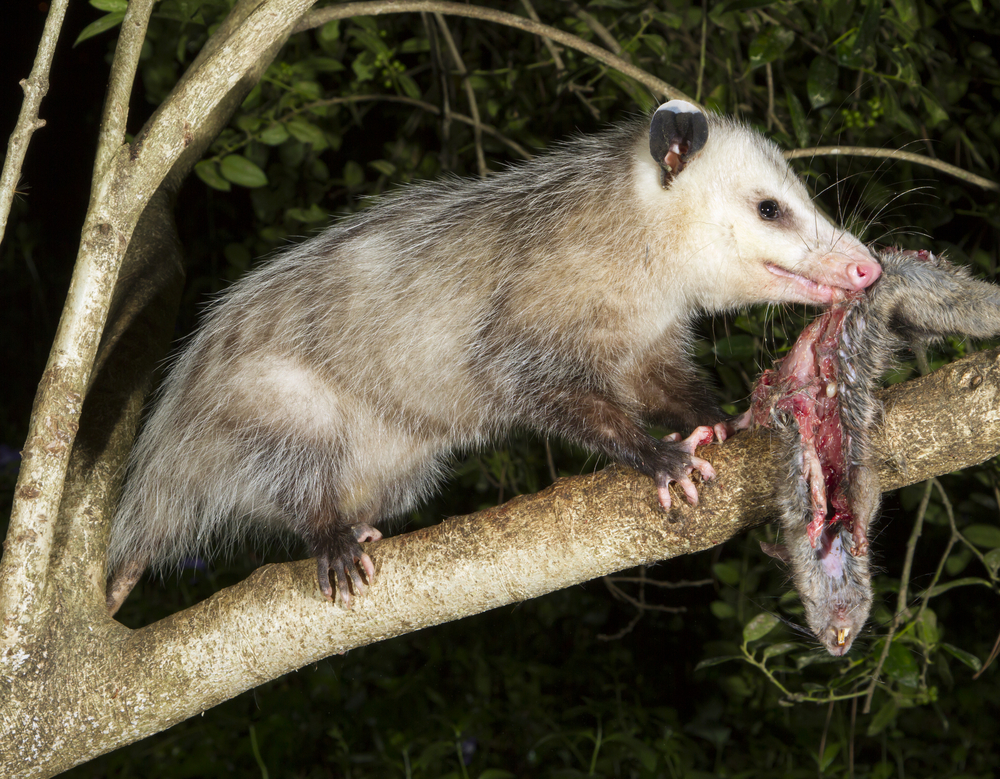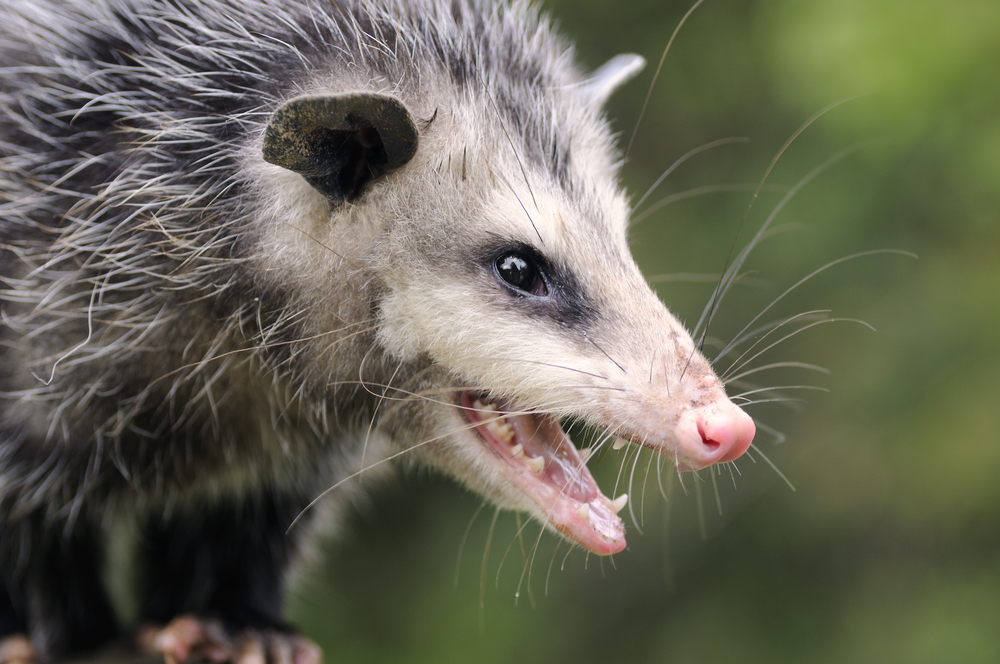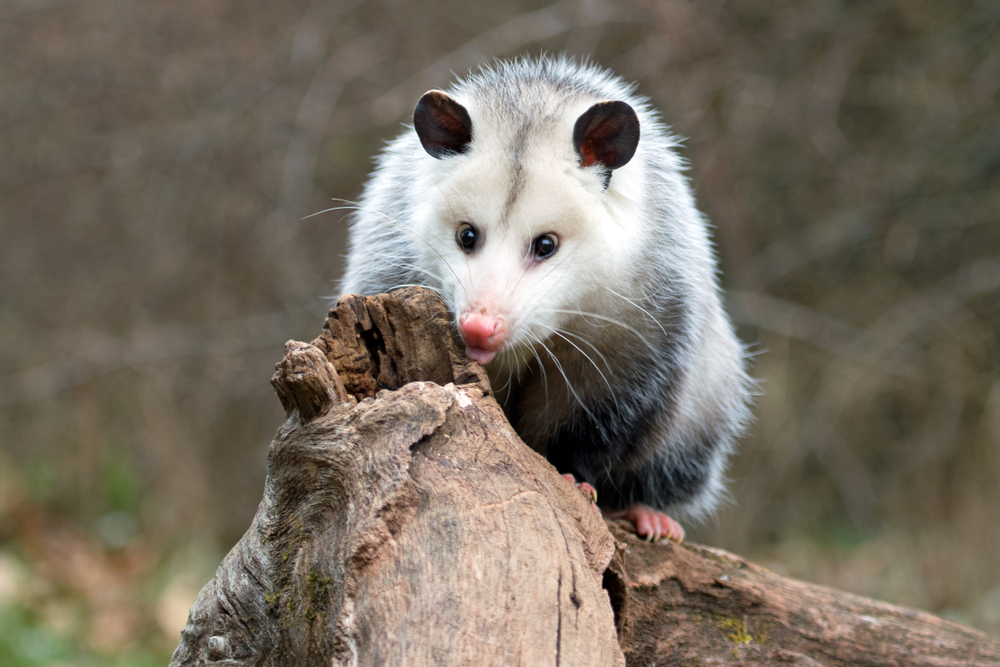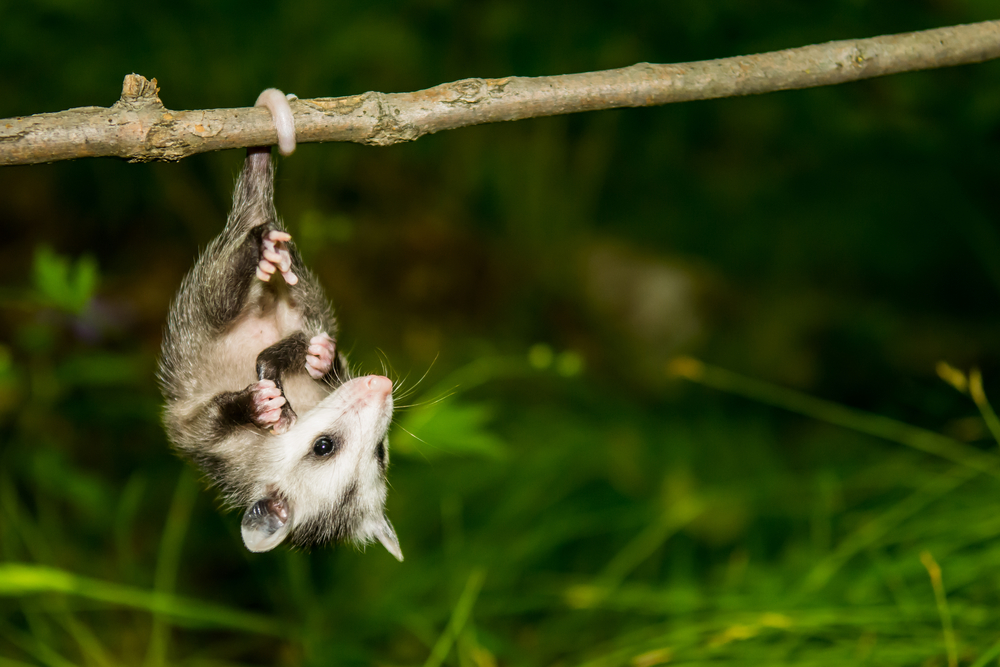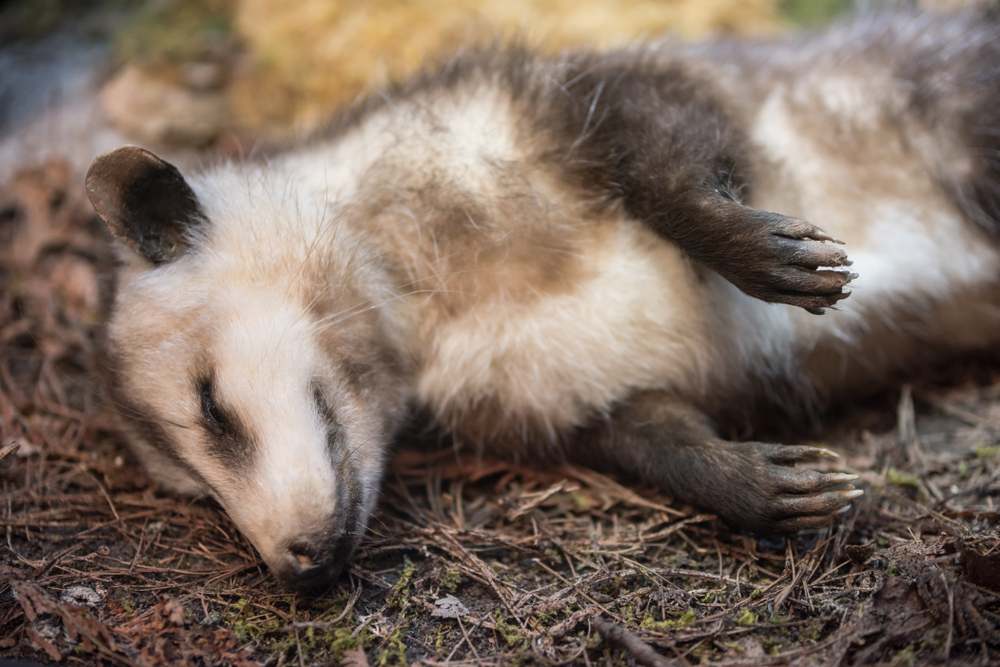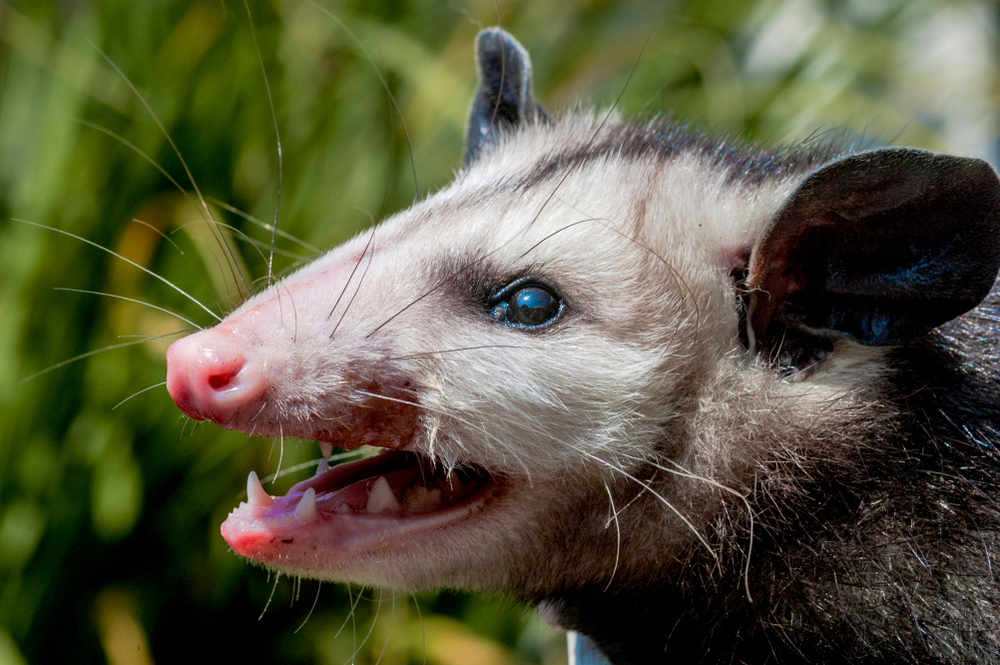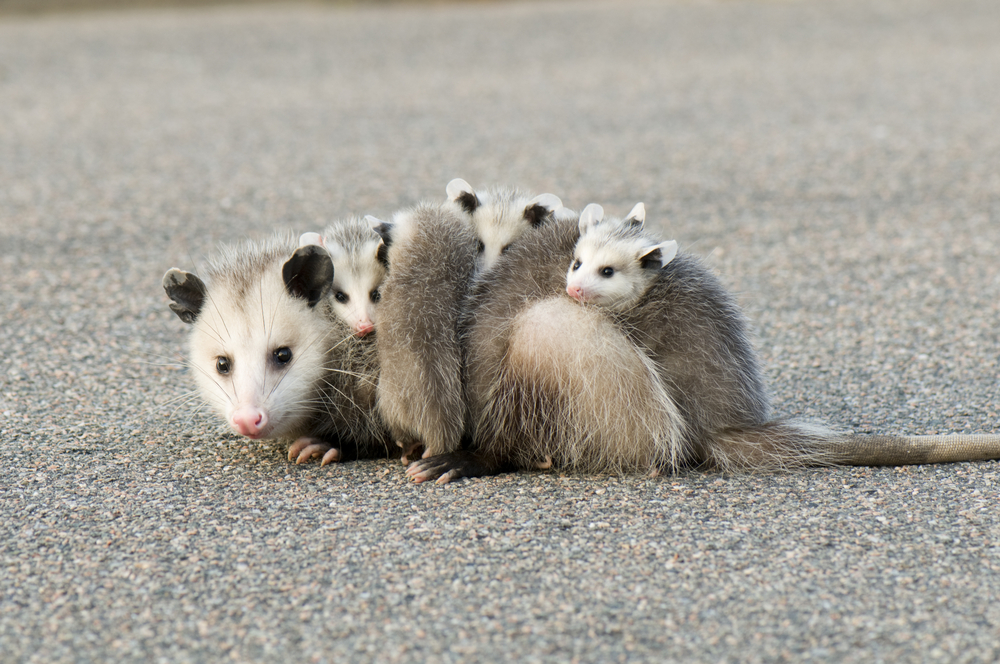About
The opossum, scientifically known as Didelphis virginiana, is a fascinating marsupial species native to the Americas. It belongs to the Animal Kingdom, specifically within the class Mammalia, order Didelphimorphia, and family Didelphidae. Opossums are unique among North American wildlife as the only marsupials found in the United States and Canada.
These creatures have a distinctive appearance with long, hairless tails, pointy snouts, and rounded ears. Opossums are known for their prehensile tails, which they use for balance and grip when climbing. Their fur can vary in color, often ranging from gray to brown, and they typically have white faces with pink noses.
One of the most remarkable features of opossums is their reproductive system. Female opossums have a pouch on their abdomen where they carry and nurse their undeveloped young, known as joeys. This marsupial reproduction is a unique characteristic not found in other North American mammals.
Opossums are opportunistic omnivores, meaning they eat a wide variety of foods, including insects, fruits, vegetables, small animals, and even carrion. Their adaptability to various habitats, including urban areas, has contributed to their survival and ability to thrive in diverse environments.
Despite their somewhat intimidating appearance, opossums play a vital role in ecosystems by helping control insect populations and serving as scavengers. Their evolutionary distinctiveness and ability to adapt to changing environments make them a remarkable and valuable component of the Animal Kingdom.
Conservation Concerns
While some opossum species are abundant and widespread, others face threats such as habitat loss, fragmentation, and road mortality due to increasing urbanization and human activity. Despite these challenges, many opossum species are adaptable and can thrive in various environments, including urban areas.
Due to the diverse range of species and their varying conservation statuses, opossums are not uniformly assessed on the IUCN Red List.
Physical Characteristics
The opossum, specifically the Virginia opossum (Didelphis virginiana), is North America’s only marsupial. These nocturnal animals are known for their unique survival strategies, including “playing dead” when threatened. Opossums are adaptable creatures, thriving in diverse environments such as woodlands, farmlands, and urban areas. Here’s a detailed look at the physical characteristics of the Virginia opossum:
Size
- Body Length: Adult opossums typically measure between 13 to 37 inches (33 to 94 centimeters) from nose to the base of the tail.
- Tail Length: The tail can add an additional 8.5 to 19 inches (21.6 to 48.2 centimeters), making them quite distinctive.
- Weight: They weigh between 4 to 14 pounds (1.8 to 6.4 kilograms), with some variation depending on their habitat and diet.
Physical Characteristics
- Body Shape: Opossums have a somewhat rounded, chunky body with a short, thick coat. Their underbelly is generally lighter than the dark gray or black fur on their back.
- Fur: Their fur is coarse, with a mix of white and black hairs that give them a grayish appearance. The face is white with dark eyes and a pink nose.
- Head and Face: The head is elongated with a pointed snout. Opossums have small, sharp teeth, including 50 teeth in total, more than any other North American land mammal.
- Eyes: They have relatively small, dark eyes that are more sensitive to light than to detail, reflecting their nocturnal nature.
- Ears: Their ears are large, hairless, and black, making them one of the opossum’s most recognizable features.
- Tail: The tail is long, hairless, and prehensile, acting as an additional limb for climbing and balancing. It is often used to carry nesting materials and can wrap around branches for stability.
- Paws: Opossums have five toes on each foot, with a thumb-like opposable digit on the rear feet, which lacks a claw. This feature aids in climbing and grasping.
- Marsupial Pouch: Female opossums possess a marsupial pouch where they carry and nurse their young until they are old enough to venture out.
Behavior and Adaptations
Opossums are omnivores, with a diet that includes fruits, nuts, insects, small animals, and carrion. They are known for their ability to “play possum,” where they feign death by becoming stiff and emitting a foul smell from anal glands to deter predators.
Their adaptability to various environments, along with a generalist diet and reproductive strategy (females can have multiple litters per year with several young each time), has allowed the opossum to thrive in many areas. Despite often being misunderstood, opossums play a beneficial role in ecosystems, such as controlling insect populations and cleaning up carrion.
Reproduction
Opossums, belonging to the family Didelphidae, have a unique reproductive cycle influenced by their marsupial nature and ecological factors. Here’s an overview:
Sexual Maturity: Opossums reach sexual maturity relatively early compared to other mammals, typically between 4 to 6 months of age, depending on species and environmental conditions.
Breeding Season: The breeding season for opossums varies by species and geographical location. In temperate regions, breeding typically occurs in late winter to early spring, while in tropical regions, it may occur year-round.
Courtship and Mating: During the breeding season, male opossums actively seek out receptive females. Courtship behaviors may involve vocalizations, scent marking, and chasing. Once a mating pair is formed, copulation occurs, often multiple times over several nights.
Gestation Period: Following successful mating, female opossums undergo a short gestation period, lasting only about 12 to 14 days. This brief gestation is one of the shortest among mammals.
Birth and Neonatal Phase: Opossums are marsupials, meaning they give birth to relatively undeveloped young that continue their development in a pouch. After the short gestation period, the tiny, embryonic-like opossums, called joeys, are born. They immediately crawl to the mother’s pouch, where they attach to a teat and continue their development.
Pouch Development: Inside the mother’s pouch, the joeys undergo rapid growth and differentiation over the next several weeks. They remain attached to the teats, nursing and receiving vital nutrients for their development.
Weaning and Independence: After several weeks, the joeys begin to emerge from the pouch, venturing out cautiously while still returning to nurse. Weaning typically occurs around 2 to 3 months of age, although this can vary. Once weaned, young opossums become more independent, foraging for food alongside their mother and learning essential survival skills.
Maternal Care: Female opossums provide extensive maternal care to their young, carrying them in the pouch and protecting them from predators. They also groom and teach their offspring essential behaviors, such as finding food and avoiding danger.
Sexual Dimorphism: In some species, there is sexual dimorphism in the number of teats present in the pouch. For example, the Virginia opossum (Didelphis virginiana) typically has 13 teats, while other species may have fewer or more.
Reproductive Success and Population Dynamics: The reproductive success of opossums is influenced by factors such as habitat quality, food availability, and predation pressure. Understanding the reproductive cycle of opossums is essential for their conservation and management in various ecosystems.
Lifespan
The opossum, specifically referring to the Virginia opossum (Didelphis virginiana), is a marsupial native to North and South America. They are known for their unique reproductive system, where females carry their young in a pouch. Opossums are opportunistic omnivores and are often found in diverse habitats ranging from forests to urban areas.
Lifespan in the Wild: In the wild, opossums typically have a lifespan of around 1 to 2 years. However, many factors can influence their longevity, including predation, disease, competition for resources, environmental hazards, and accidents such as being hit by vehicles. Opossums face significant challenges in the wild, and only a small percentage of individuals survive to reach their maximum lifespan.
Lifespan in Captivity: Opossums kept in captivity, such as in wildlife rehabilitation centers or as exotic pets, may have longer lifespans compared to those in the wild. With proper care, nutrition, and veterinary attention, captive opossums can live up to 3 to 4 years or even longer. However, captivity also introduces stressors and health risks, and not all captive opossums reach their full lifespan potential.
Threats to the Opossum:
- Predation: Opossums are preyed upon by various predators, including owls, hawks, foxes, coyotes, dogs, and cats. Their relatively small size, slow movement, and limited defense mechanisms make them vulnerable to predation, especially during foraging or when crossing roads.
- Habitat Loss and Fragmentation: Habitat loss due to urbanization, deforestation, agricultural expansion, and other human activities is a significant threat to opossum populations. Fragmentation of natural habitats reduces suitable foraging areas, disrupts movement patterns, and increases the risk of encounters with predators and vehicles.
- Vehicle Collisions: Opossums are frequently killed or injured by vehicles while crossing roads, highways, and urban areas in search of food, mates, and shelter. Roads act as barriers, fragmenting opossum habitats and increasing mortality rates due to collisions with vehicles.
- Disease and Parasites: Opossums are susceptible to various diseases and parasites, including rabies, distemper, toxoplasmosis, and ticks. Disease outbreaks can decimate opossum populations, especially in areas with high densities of individuals and limited access to healthcare resources.
- Human Conflict: Opossums may come into conflict with humans over resources such as food, shelter, and garbage. They are sometimes perceived as pests and may be subjected to trapping, poisoning, or other forms of control measures by homeowners and agricultural producers.
- Climate Change: Climate change and associated environmental shifts, such as changes in temperature, precipitation patterns, and habitat suitability, can impact opossum populations. These changes may alter food availability, reproductive success, and disease dynamics, affecting opossum survival and distribution.
Conservation efforts aimed at preserving natural habitats, reducing human-wildlife conflicts, implementing wildlife-friendly infrastructure, promoting responsible pet ownership, and raising public awareness about the ecological importance of opossums are essential for ensuring the long-term survival of this species in the wild. Additionally, research on opossum ecology, behavior, and conservation biology is necessary for developing effective management strategies and mitigating threats to their populations.
Eating Habits
The opossum, a marsupial native to the Americas, exhibits a diverse diet and is considered an opportunistic omnivore. These nocturnal creatures are known for their adaptability and ability to consume a wide range of foods found in their varied habitats.
Diet: Opossums have a varied diet consisting of both plant matter and small animals. They are opportunistic feeders, consuming whatever food is readily available in their environment. Their diet includes fruits, berries, nuts, seeds, insects, small rodents, birds, eggs, and carrion. They also occasionally feed on amphibians, reptiles, and even garbage or pet food left outdoors.
Foraging Behavior: Opossums are primarily nocturnal foragers, although they may also be active during the twilight hours. They use their keen sense of smell and excellent hearing to locate food sources. Opossums are skilled climbers and are capable of foraging both on the ground and in trees, allowing them to access a variety of food items.
Hunting Techniques: While opossums primarily consume plant matter and small prey, they are not efficient hunters. Instead, they rely on scavenging for carrion or preying on slow-moving or injured animals. Opossums may also opportunistically capture insects or small vertebrates that they encounter while foraging.
Prey Selection: Opossums are known to consume a wide variety of prey, including insects, small mammals, birds, eggs, and reptiles. Their diet varies depending on factors such as habitat type, seasonal food availability, and individual preferences. Opossums are generalists and will consume whatever food is most abundant and easily accessible.
Scavenging Behavior: One of the notable feeding behaviors of opossums is scavenging. They are often attracted to carrion and will readily consume dead animals they encounter. This scavenging behavior helps opossums supplement their diet and provides an additional source of nutrients, especially during times when prey is scarce.
Role in Ecosystem: As opportunistic omnivores, opossums play an important role in their ecosystems by helping to control insect populations, dispersing seeds through their feces, and scavenging carrion. Their feeding habits contribute to nutrient cycling and ecosystem health.
Conservation Concerns: Opossums are not considered threatened or endangered species, and their populations are generally stable. However, they may face threats from habitat loss, fragmentation, and urbanization. Conservation efforts focused on habitat preservation and minimizing human-wildlife conflict can help ensure the continued survival of opossum populations.
Uniqueness
Opossums, often referred to simply as “possums” in North America, are intriguing marsupials found primarily in the Americas. Here are some key aspects that make opossums unique:
Marsupial Characteristics: Opossums belong to the order Didelphimorphia and are the only marsupials found in North America. Like other marsupials, they give birth to relatively undeveloped young, which then continue to develop and nurse in their mother’s pouch until they are mature enough to survive outside.
Prehensile Tails: Many species of opossums have prehensile tails, which they use for grasping and climbing. This adaptation allows them to navigate through trees and other elevated habitats with ease, helping them escape predators and access food sources.
Variable Diet: Opossums are opportunistic omnivores, meaning they will eat a wide variety of foods depending on what is available. Their diet includes insects, fruits, vegetables, small mammals, birds, eggs, carrion, and even garbage in urban environments.
Playing Dead: Opossums have a unique defense mechanism known as “playing dead” or “playing possum.” When threatened or startled, they may feign death by becoming immobile, drooling, and emitting a foul-smelling odor from their anal glands. This behavior can confuse predators and give the opossum an opportunity to escape.
Nocturnal Behavior: Opossums are primarily nocturnal, meaning they are most active during the night. They have excellent night vision and a keen sense of smell, which they use to locate food and avoid predators in the darkness.
Wide Distribution: Opossums are found throughout the Americas, ranging from Canada to Argentina. They inhabit a variety of habitats, including forests, grasslands, wetlands, and urban areas, making them one of the most adaptable mammal species on the continent.
Cultural Significance: Opossums have cultural significance in many indigenous cultures throughout the Americas. They are often featured in folklore, myths, and legends, where they are portrayed as clever tricksters or symbols of resilience and adaptability.
Unique Reproductive Biology: Female opossums have a remarkable reproductive system characterized by a bifurcated uterus and a pouch for carrying and nurturing their young. They typically give birth to large litters of up to 20 or more babies, known as joeys, which crawl into the mother’s pouch and attach to her nipples to nurse.
Despite their somewhat unassuming appearance, opossums possess a variety of unique adaptations and behaviors that have allowed them to thrive in diverse habitats throughout the Americas. Their role as scavengers and seed dispersers makes them important contributors to ecosystem health and biodiversity.
Sources
- Britannica, Opossum, https://www.britannica.com/animal/opossum-marsupial-group, retrieved January 2024.
- Burnie, David & Wilson, Don, Animal, Smithsonian Institute, Washington DC.
- Clutton-Brock, Juliet and Wilson, Don, Mammals, Smithsonian Handbooks, New York, NY.
- Hickman et al, Integrated Principle of Zoology, McGraw Hill, Boston.
- Paragon, The Ultimate Guide to Wildlife in North America, Atlantic Publishing, UK.





































































